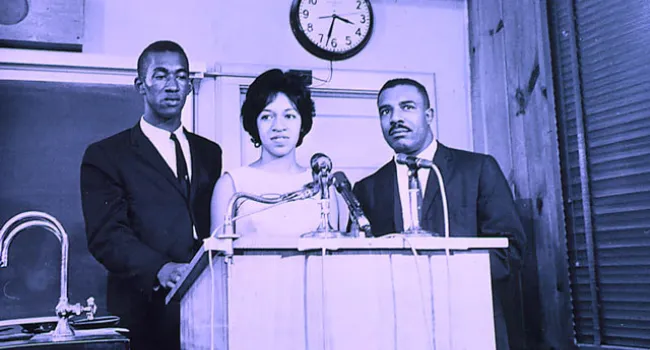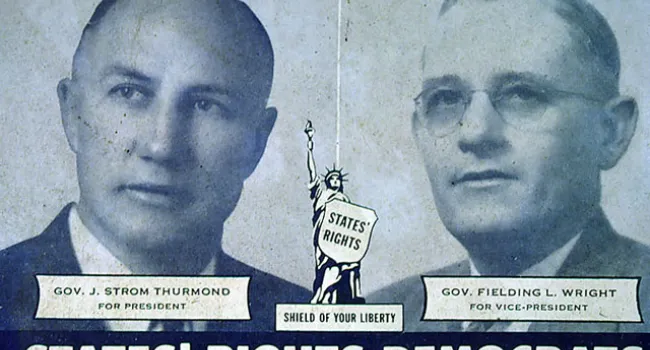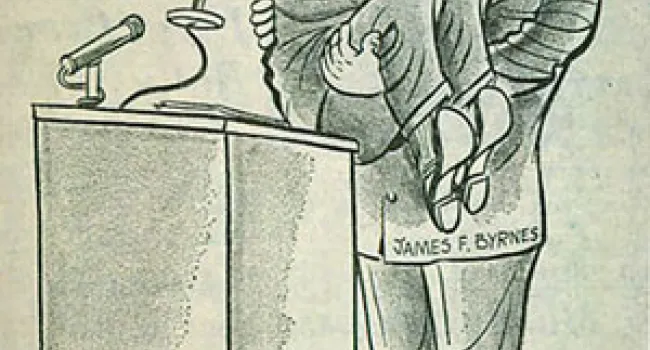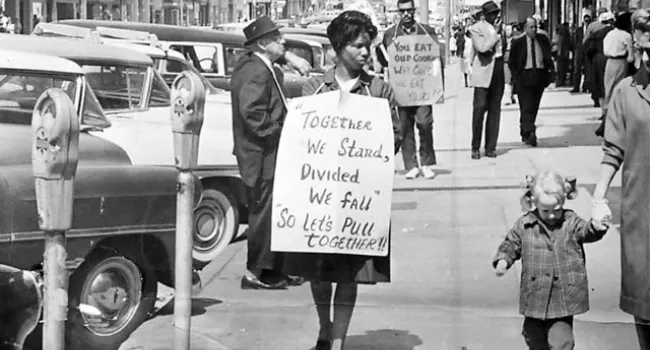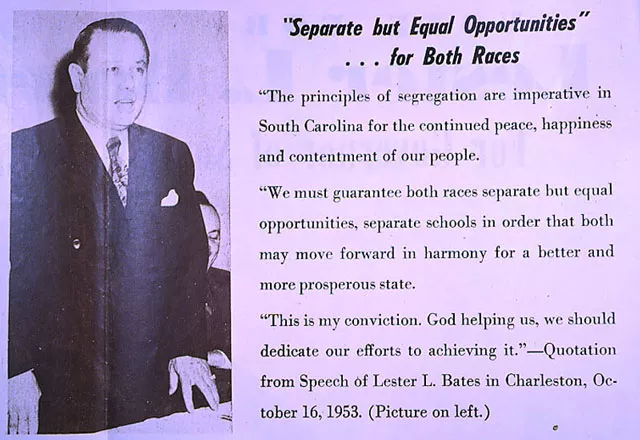
The growing pressures brought to bear against legal segregation by the federal court system, that culminated in the 1954 Supreme Court decision in "Brown v. The Board of Education" of Topeka, Kansas, made race and the preservation of a rigidly separated political and social system an important political issue. Lester Bates appealed to the fears of South Carolinians who had opposed the integration of the armed forces at Fort Jackson, Parris Island, the Charleston Naval Station, and other bases within the state, and reacted in outrage to the Supreme Court decision of the 1940s that struck down the old Democratic "white primary." His campaign against popular Governor James Byrnes in 1953 was unsuccessful.
Courtesy of the South Caroliniana Library.
Standards
- 5.4.CE Analyze the causes and impacts of social movements in the U.S. and South Carolina.
- This indicator was developed to encourage inquiry into civic engagement, such as military service, public demonstrations, and political activism, to shape the identity of modern South Carolina. This indicator was also written to encourage inquiry into South Carolinians’ use of the court system and legislation to affect South Carolina’s post-World War II identity.
- This indicator was designed to promote inquiry into military and economic policies during World War II, to include the significance of military bases in South Carolina. This indicator was also developed to foster inquiry into postwar economic developments and demographic changes, to include the immigration of Jewish refugees following the Holocaust.


